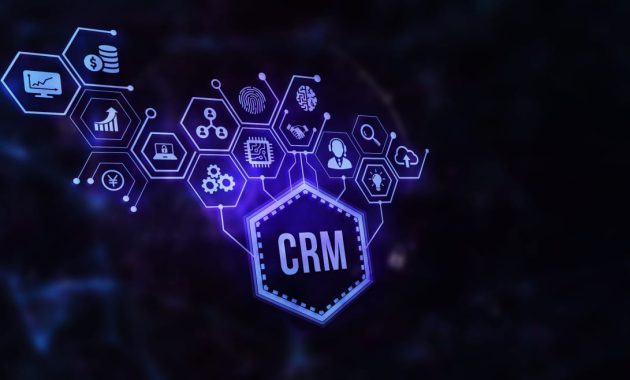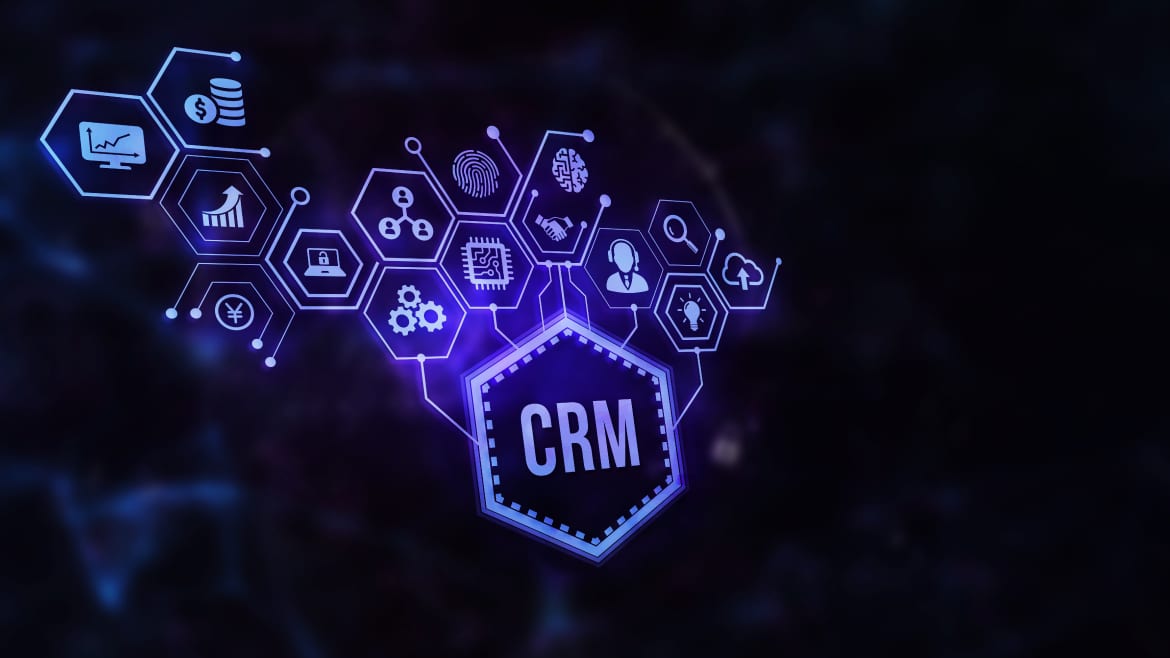
Seamless Integration: How to Integrate CRM with Business Intelligence Software for Data-Driven Success
In today’s dynamic business landscape, data reigns supreme. Companies are increasingly reliant on data-driven insights to make informed decisions, optimize operations, and gain a competitive edge. Two crucial software categories that facilitate this are Customer Relationship Management (CRM) systems and Business Intelligence (BI) software. While both are powerful tools in their own right, their true potential is unlocked when they are integrated. This article delves into the critical process of how to integrate CRM with Business Intelligence software, exploring the benefits, strategies, and best practices for achieving a seamless and successful integration.
The integration of CRM and BI is not merely a technical exercise; it’s a strategic imperative. It allows businesses to transform raw data into actionable intelligence, leading to improved customer experiences, increased sales, and enhanced operational efficiency. By combining the customer-centric focus of CRM with the analytical capabilities of BI, organizations can gain a 360-degree view of their customers and the overall health of their business.
Understanding the Core Components: CRM and BI
Before diving into the integration process, it’s essential to understand the individual roles of CRM and BI software.
CRM: The Customer Relationship Hub
A CRM system is designed to manage and analyze customer interactions and data throughout the customer lifecycle. It acts as a central repository for all customer-related information, including contact details, communication history, purchase records, and support interactions. Key functionalities of a CRM system include:
- Contact Management: Storing and organizing customer contact information.
- Sales Force Automation: Managing sales pipelines, tracking leads, and automating sales processes.
- Marketing Automation: Automating marketing campaigns, managing email lists, and tracking marketing performance.
- Customer Service: Managing customer support tickets, tracking issues, and providing customer service.
CRM systems empower businesses to build stronger customer relationships, improve customer satisfaction, and increase sales revenue.
BI: The Data Analysis Engine
Business Intelligence (BI) software is focused on analyzing data to provide insights that inform business decisions. It aggregates data from various sources, including CRM, ERP (Enterprise Resource Planning), and other operational systems, and transforms it into meaningful information. Key functionalities of BI software include:
- Data Warehousing: Storing and organizing large volumes of data.
- Data Mining: Discovering patterns and trends in data.
- Reporting and Analytics: Generating reports and dashboards to visualize data and track key performance indicators (KPIs).
- Data Visualization: Presenting data in a visually appealing and easy-to-understand format.
BI software enables businesses to identify trends, measure performance, and make data-driven decisions that drive growth and profitability.
The Benefits of Integrating CRM and BI
The integration of CRM and BI software offers a multitude of benefits, transforming the way businesses operate and interact with their customers. Here are some key advantages:
- Improved Customer Insights: By combining CRM data with BI analytics, businesses gain a deeper understanding of customer behavior, preferences, and needs. This allows for personalized marketing campaigns, targeted sales efforts, and improved customer service.
- Enhanced Sales Performance: Integrating CRM and BI enables sales teams to track sales performance, identify trends, and optimize sales strategies. Sales representatives can access real-time data on customer interactions, sales pipelines, and revenue generation, leading to increased sales and revenue.
- Optimized Marketing Campaigns: BI insights into customer data allow marketing teams to create more effective marketing campaigns. By analyzing customer behavior, preferences, and demographics, marketers can tailor their campaigns to reach the right audience with the right message, leading to higher conversion rates and improved ROI.
- Better Customer Service: Integrating CRM and BI allows customer service teams to access a complete view of the customer, including their purchase history, communication history, and support interactions. This enables them to provide faster, more personalized, and more effective customer service, leading to increased customer satisfaction and loyalty.
- Data-Driven Decision Making: Integrated CRM and BI systems provide a single source of truth for all customer data. This allows business leaders to make data-driven decisions based on accurate and up-to-date information, improving overall business performance.
- Increased Operational Efficiency: Integrating CRM and BI can streamline business processes, automate tasks, and eliminate manual data entry. This leads to increased operational efficiency, reduced costs, and improved productivity.
Step-by-Step Guide: How to Integrate CRM with Business Intelligence Software
Integrating CRM and BI software can seem complex, but following a structured approach can ensure a smooth and successful integration. Here’s a step-by-step guide on how to integrate CRM with Business Intelligence software:
Define Objectives and Requirements
Before starting the integration process, clearly define your objectives and requirements. What specific goals do you want to achieve by integrating your CRM and BI systems? What data do you need to integrate? What reports and dashboards do you want to create? Defining these goals upfront will help you choose the right integration method and ensure that the integration meets your business needs.
Choose the Right Integration Method
There are several methods for integrating CRM and BI software. The best method for your business will depend on your specific requirements, budget, and technical expertise. Some common integration methods include:
- Native Integration: Some CRM and BI vendors offer native integrations that allow you to seamlessly connect their products. This is often the easiest and most straightforward method.
- Third-Party Integration Tools: Several third-party integration tools are available that can connect CRM and BI systems. These tools often provide pre-built connectors and workflows that simplify the integration process.
- Custom Integration: If native integrations or third-party tools are not suitable for your needs, you can develop a custom integration using APIs (Application Programming Interfaces) and other development tools. This method offers the most flexibility but requires significant technical expertise.
Select the Data to Integrate
Identify the specific data that needs to be integrated between your CRM and BI systems. This may include customer contact information, sales data, marketing data, and customer service data. The data you choose to integrate will depend on your objectives and requirements. Ensure that the data is accurate, consistent, and well-formatted before integrating it.
Establish Data Mapping
Data mapping involves defining how data fields in your CRM system will map to corresponding fields in your BI system. This ensures that data is transferred correctly and consistently between the two systems. Carefully map the data fields to avoid data loss or errors.
Implement the Integration
Once you have chosen your integration method, selected the data to integrate, and established data mapping, you can begin implementing the integration. This may involve configuring the integration tools, setting up data pipelines, and testing the integration to ensure that data is flowing correctly between the two systems.
Test and Validate the Integration
Thoroughly test the integration to ensure that data is being transferred correctly and that your reports and dashboards are accurate. Validate the data by comparing the data in your CRM and BI systems. Make any necessary adjustments to the integration based on your testing results.
Monitor and Maintain the Integration
Once the integration is complete, monitor the data flow and performance of the integrated systems. Regularly review your reports and dashboards to ensure that they are providing accurate and up-to-date information. Make any necessary adjustments to the integration as your business needs evolve.
Best Practices for a Successful CRM and BI Integration
To maximize the benefits of integrating your CRM and BI systems, consider these best practices:
- Plan Ahead: Before starting the integration process, take the time to plan and define your objectives, requirements, and integration strategy.
- Choose the Right Tools: Select CRM and BI software that are compatible and meet your business needs. Evaluate your options and carefully consider the integration methods available.
- Clean Your Data: Ensure that your data is accurate, consistent, and well-formatted before integrating it. Clean your data to remove duplicates, correct errors, and standardize data formats.
- Prioritize Security: Implement security measures to protect your data during the integration process. Use secure data transfer protocols and encrypt sensitive data.
- Train Your Users: Train your users on how to use the integrated CRM and BI systems. Provide them with the necessary knowledge and skills to effectively use the data and insights generated by the integration.
- Seek Expert Advice: If you lack the technical expertise to integrate your CRM and BI systems, consider seeking expert advice from a qualified consultant or integration specialist.
Common Challenges and How to Overcome Them
While the integration of CRM and BI software offers significant benefits, businesses may encounter certain challenges during the process. Here are some common challenges and how to overcome them:
- Data Silos: Data silos can make it difficult to integrate data between CRM and BI systems. To overcome this, establish a centralized data warehouse or data lake to store all your data.
- Data Quality Issues: Inaccurate or inconsistent data can lead to misleading insights. To address this, implement data quality checks and data cleansing processes.
- Integration Complexity: Integrating CRM and BI systems can be complex, especially if you are using multiple systems or custom integrations. To simplify the process, consider using pre-built connectors or third-party integration tools.
- Lack of Technical Expertise: Integrating CRM and BI systems requires technical expertise. If you lack the necessary skills, consider hiring a consultant or integration specialist.
- Resistance to Change: Users may resist adopting new systems or processes. To overcome this, involve users in the integration process and provide them with training and support.
Real-World Examples of Successful CRM and BI Integration
Many businesses have successfully integrated their CRM and BI systems to achieve significant business results. Here are a few examples:
- Retail Company: A retail company integrated its CRM and BI systems to analyze customer purchase data and identify trends. This allowed them to personalize marketing campaigns, optimize product placement, and increase sales.
- Manufacturing Company: A manufacturing company integrated its CRM and BI systems to track sales performance and identify areas for improvement. This allowed them to optimize their sales strategies, improve customer satisfaction, and increase revenue.
- Healthcare Provider: A healthcare provider integrated its CRM and BI systems to analyze patient data and improve patient care. This allowed them to identify high-risk patients, personalize treatment plans, and improve patient outcomes.
These examples demonstrate the power of integrating CRM and BI systems to drive business success.
The Future of CRM and BI Integration
The integration of CRM and BI software is becoming increasingly important as businesses strive to become more data-driven. As technology advances, we can expect to see even more seamless and sophisticated integrations. The future of CRM and BI integration includes:
- Artificial Intelligence (AI): AI will play a key role in automating data analysis, generating insights, and personalizing customer experiences.
- Machine Learning (ML): ML algorithms will be used to predict customer behavior, identify trends, and optimize business processes.
- Cloud-Based Solutions: Cloud-based CRM and BI solutions will become more prevalent, making it easier to integrate data and access insights from anywhere.
- Real-Time Data Integration: Real-time data integration will become more common, allowing businesses to make decisions based on the most up-to-date information.
As these technologies evolve, the integration of CRM and BI software will become even more critical for businesses seeking to gain a competitive edge in the data-driven world. Understanding how to integrate CRM with Business Intelligence software is essential for businesses of all sizes to unlock the full potential of their data and drive success.
By understanding the benefits, implementing a well-defined integration strategy, and following best practices, businesses can unlock the full potential of their data and achieve significant business results. The integration of CRM and BI is not just a trend; it’s a fundamental shift in how businesses operate, interact with customers, and make decisions. The ability to understand how to integrate CRM with Business Intelligence software will define the success of businesses in the coming years.
[See also: Choosing the Right CRM System, Data Visualization Techniques for Business, Data Warehousing Best Practices]

